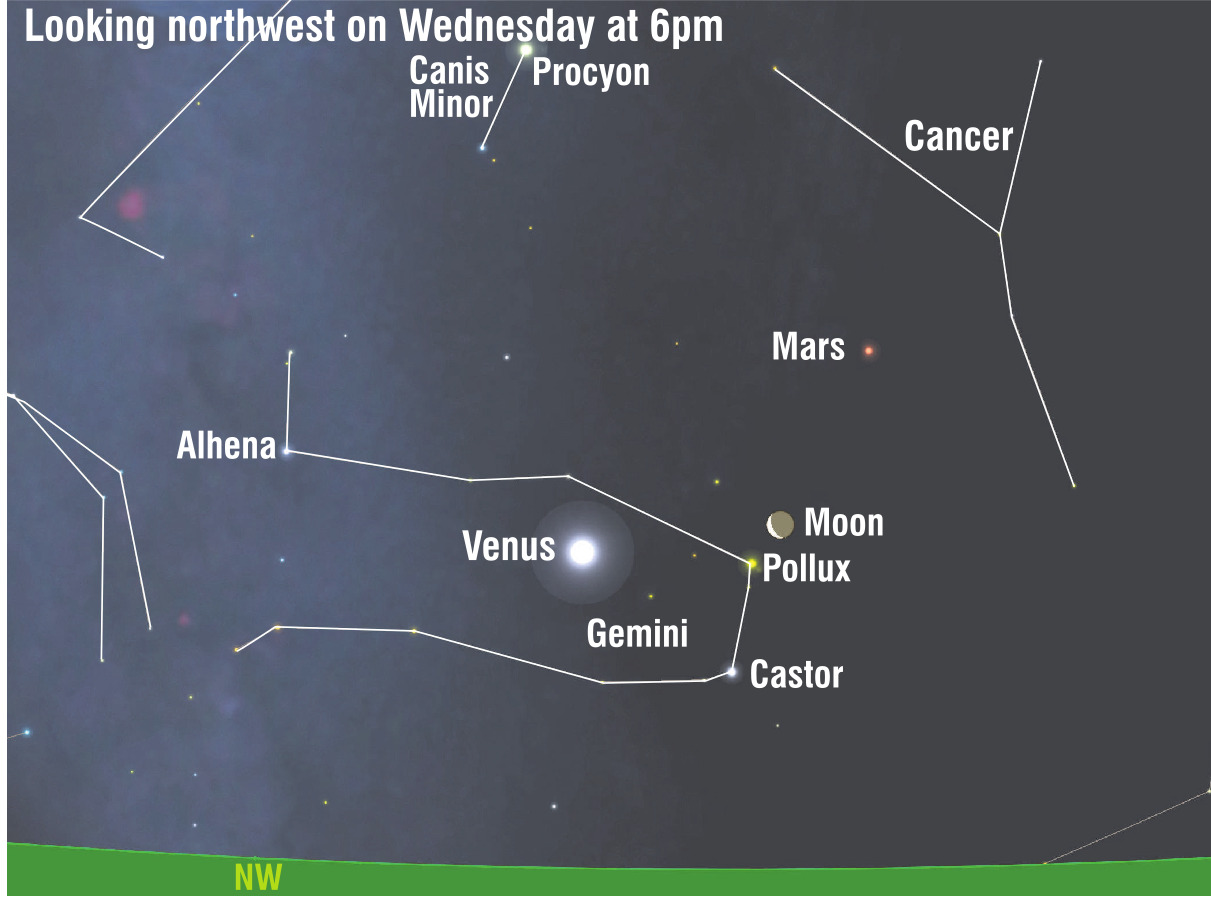

These chaps were sons of Leda, Queen of Sparta. According to legend and to a process we now call heteropaternal superfecundation, Castor was the mortal son of the king of Sparta. While born at the same time as his half-brother, Pollux’s father was in fact Zeus, and he was, therefore, immortal.
As the sky darkens on Wednesday, the moon, which will be just under 20% illuminated, will be very close to Gemini’s brightest star, Pollux. Pollux is a giant star whose diameter is 10 times the sun’s. The star is distinctly orangy-yellow in colour and is about 34 light-years from Earth. The light you see when looking at this distant star began its journey to your eyes back in 1989!
On Wednesday, the moon forms the apex of a beautiful celestial triangle involving the planets Venus and Mars. The trio should be a lovely sight as the sky darkens and will be a scene well worth trying to photograph.
Venus will be easy to see, blazing incredibly brightly below and to the moon’s left. The second planet from the sun is just under 120 million kilometres away from us at the moment. If you have a telescope, you should be able to see its tiny disk, which is 55% illuminated.
Mars, which is in the neighbouring constellation of Cancer, will be visible as a bright red star above and to the right of the moon. The fourth planet from the sun is much further away from Earth than its planetary sibling. This week the red planet is 290 million kilometres away.













